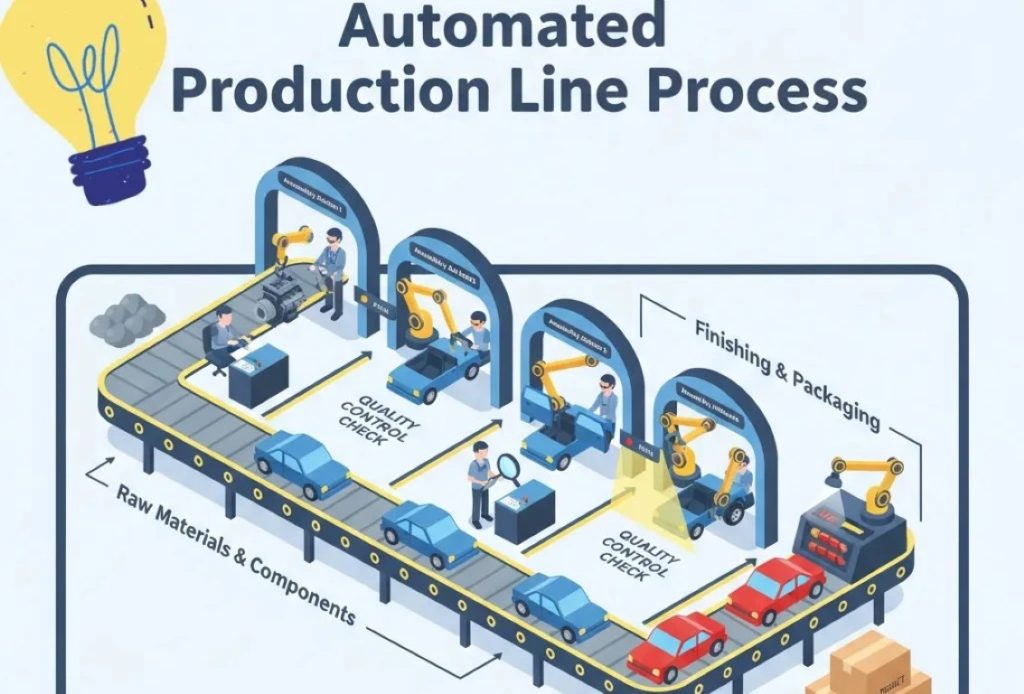
Consider yourself in charge of a busy warehouse, orders coming in like crazy, shelves filled with goods, and your staff working nonstop. How do you manage to remember everything amidst all this chaos? The only solution is to make yourself familiar with inventory management. So, join this blog to start debating on physical inventory vs cycle counting. These are the two main strategies for managing your inventory. But which one is the best? Let’s dissect it.
Physical inventory is like an annual rush to count every last item. Contrarily, cycle counting is a more regular and targeted method. Let’s examine each’s benefits and how they work to keep your inventory in top condition. Start exploring!
Physical Inventory Vs Cycle Counting: The Basics
Physical Inventory: This is the most traditional approach to inventory management where you count every item in your warehouse at a given moment, usually occurring once a year or towards the end of the fiscal year.
Cycle counting: You can call this a younger sibling of physical inventory where you count a portion of your inventory on a regular, rotating basis as opposed to counting it all at once, probably weekly, monthly, or even daily.
Though they seem to achieve the same goal the way they work is quite different.
Physical Inventory: A Conventional Method
Let’s say the year is concluding for a day or longer, your warehouse stops working, and everyone participates in tallying every item on every shelf. It seems enjoyable, doesn’t it? Not really. However, there’s a reason why some people still firmly believe in this age-old practice.
Advantages of Physical Inventory
- Accuracy: You obtain an exact picture of your complete inventory because you’re counting everything at once.
- Ease of use: Simply count everything and compare the results to your records.
- Thorough Examination: This is an excellent method for identifying inconsistencies that may have gone unnoticed during the year.
Apart from these above benefits physical inventory also has drawbacks such as it takes a lot of time and work, it’s labor intensive, and can disrupt your everyday business operations. So, closing your warehouse for a few days to count the inventory is not at all ideal, particularly in the fast-paced world of today.
Cycle Counting: A Modern Approach
This is a less disruptive and more adaptable method where you count different areas of your inventory in small, manageable chunks as opposed to stopping operations.
Advantages of cycle counting
- Constant Accuracy: You can keep your inventory record current by routinely counting small portions.
- Less Disruption: Cycle counting can be done in addition to your normal process; there’s no need to stop operations.
- Concentrate on High-Value Items: You can count items that are more valuable or prone to errors in a higher priority.
In inventory management, cycle counting is just like how you regularly maintain your car. You’re always making adjustments and checks to make sure everything is operating as it should, rather than waiting for something to go wrong.
How Does Cycle Counting in Inventory Management Work?
Let’s break it down for your easier understanding:
- Sort Your Stock: Arrange your stock into divisions that are doable. This could be based on value, location, or kind of product.
- Establish a Timetable: Choose how frequently you want to count each component. High-value goods may be counted more often than low-value things.
- Compile and Contrast: Carry out the tally and contrast it with your documentation but ensure to make any necessary adjustments if needed.
- Modify Frequency as Necessary: You may need to count it more frequently if you find that a certain portion has irregularities regularly.
Which Method is Right For You?
Your warehouse’s size, volume of inventory, and available resources are just a few of the variables that will influence your decision between physical inventory and cycle counting.
When to Make Use of Physical Inventory:
- Smaller Warehouses: you do not have to face the inconvenience of closing your doors for a day if you have a small amount of goods.
- Annual Audit Requirements: To comply with audit requirements, certain organizations must conduct a physical inventory.
- Initial Setup: this can be used to create a baseline while setting up your inventory system.
When Cycle Counting Should Be Used:
- Big Warehouses: Cycle counting in inventory management is more effective and causes less disruption for large businesses.
- High Turnover: Frequent cycle counts ensure reliable records if your inventory is subject to frequent fluctuations.
- Emphasis on Accuracy: If accuracy is important, then regular cycle counts should identify differences before they become significant problems.
Mixing the Finest Elements of Both Methods
When you can use both approaches, why pick just one? Some companies utilize cycle counting for continuous accuracy and physical inventory for an annual thorough inspection. By using a hybrid strategy, you can benefit from both of these methods without experiencing their drawbacks.
The Human Factor: Motivating Your Group
Managing inventories involves more than simply statistics; it also involves people. Including your staff in the process can have a profound impact.
Training and Involvement: Make sure that everyone on your team is aware of how important and precise your inventory is. Teach them how to count and include them in the procedure.
Incentive & Reward: Accuracy should be acknowledged and praised by recognizing their efforts with a little bonus or a team celebration can help to raise spirits.
Feedback Loop: Establish a channel of communication for team members to offer suggestions for enhancing the counting procedure. This increases productivity while also giving individuals a sense of worth.
Technology Comes to the Aid
In the digital age we live in today, technology is important to manage your inventories. There are many tools available to make cycle counting and physical inventory management easier, from barcode scanners to software.
Barcode scanners: They expedite the counting process and lessen human mistakes.
Inventory Management Software: Cycle counting schedules can be integrated, inconsistencies can be tracked, and reports may be generated using tools similar to ERP systems.
Automated Systems: These systems eliminate the need for manual counts by tracking inventory in real-time for larger warehouses.
The Final Verdict in Selecting the Best
There isn’t a universal solution when it comes to the conflict between physical inventory vs cycle counting. Every approach has advantages and disadvantages, and the best one will rely on your unique requirements and situation.
Physical Inventory: Excellent for baseline setup, yearly audits, and smaller enterprises.
Cycle counting: Perfect for high turnover rates, continual accuracy, and sizable warehouses.
No matter what, maintaining accurate inventory records and efficient business operations shall be your ultimate aim. Always select a system that works for you and your team, whether it’s cycle counting, physical inventory, or a combination of the two.
FAQs: A Comparative Analysis: Physical Inventory vs Cycle Counting
How often should I perform a cycle count in my warehouse?
It depends on your inventory size and turnover rate. High-value or fast-moving items might need weekly counts, while less critical items can be counted monthly.
Can I use both physical inventory and cycle counting methods?
Absolutely! You can combine and use both approaches regularly for continuous accuracy and minimal disruption.
What tools can help with inventory counting?
Barcode scanners and inventory management software are game-changers. They reduce human error and make the counting process faster and more accurate.
Conclusion
The debate of physical inventory vs cycle counting may increasingly become hazier as technology develops. Real-time tracking, automated solutions, and artificial intelligence (AI) can change your inventory management, making it more accurate and less labor-intensive. You may streamline operations, preserve accurate records, and satisfy your clients by choosing the best method for your company.
For managing inventories you should always make yourself knowledgeable and flexible. What kind of inventory management do you practice? Which side do you take? Whether you are a modernist embracing cycle counting, or the traditionalists who still stick to physical inventory, the ultimate objective is the same. Regardless of the route you take, precision, effectiveness, and a well-maintained warehouse is all you need.







